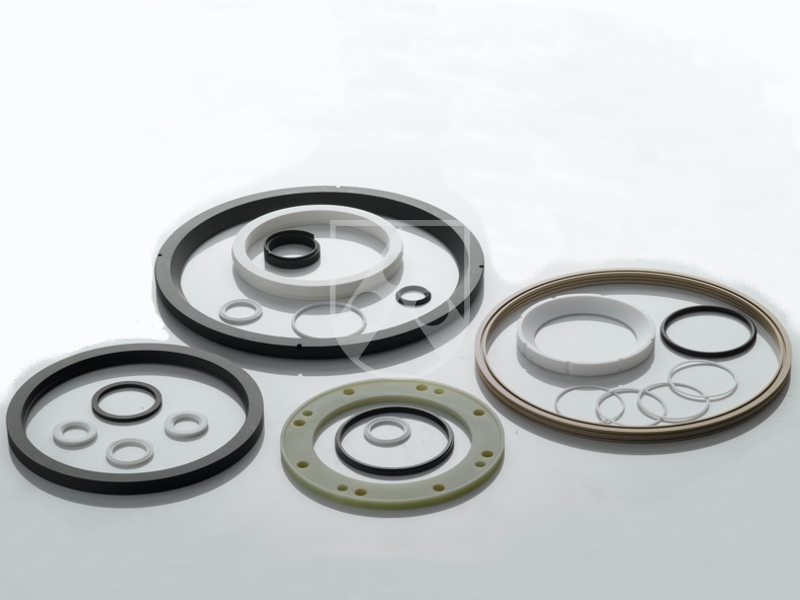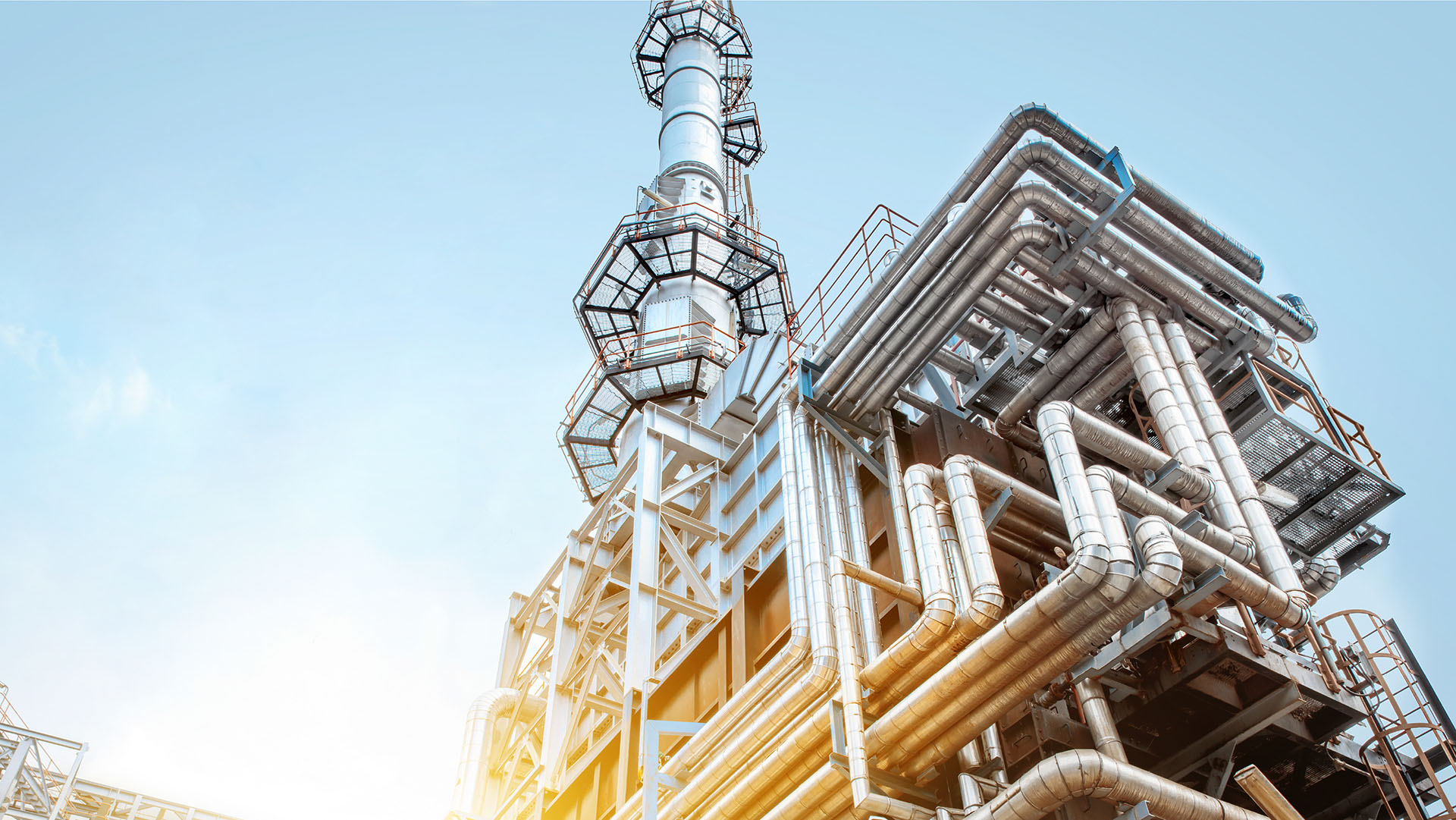Chemical resistant plastics
Materials, applications and selection criteria
Chemical media are used in numerous machines, plants and processes. For a high operational safety and reliability, engineers must plan and design their facilities so that the components can withstand contact with aggressive chemicals. If media such as hydrochloric acid (HCl), sulphuric acid (H2SO4), chromic acid (H2CrO4) and hydrofluoric acid (HF) are used, the issue of operational safety is a top priority. If damage were to occur, for example with aggressive hydrochloric acid (HCl), it would be catastrophic.
Chemical resistant plastics play an important role in the planning and development of facilities and machinery. However, not all plastics are suitable for contact with every chemical medium. Information about the chemical resistance of plastics can often be found in summary charts. However, the results usually only take individual criteria into account. A combination of different influencing factors can usually only be investigated in practice, for each individual application.
To select the appropriate chemical-resistant material, designers must always consider the specific influencing factors in their application.
Comprehensive database: Chemical resistant plastics
At Röchling Industrial we offer many years of experience and a comprehensive database relating to the chemical resistance of plastics. Our thermoplastic and composites have been used in numerous industries for decades. Here, they withstand a variety of aggressive chemical mediums and contribute to the excellent operational safety of the applications. We use this experience to advise you in selecting chemical resistant plastics. Key questions here are:
- What chemical media are used in your application, at what concentrations, and with what exposure time?
- What factors can affect the chemical resistance of the plastic? For example, a high continuous operating temperature, mechanical load, weather-resistance or fire performance requirements?
- What chemical-resistant material is the safest and most economical under these conditions?
What chemical media are used?
The main criterion for selecting the appropriate chemical resistant plastics is the chemical medium that is used in the application:
Our chemical-resistant plastics are used in the following industries, for example:
- What is the exact name?
- At what concentration is it used?
- In what composition does the facility operator want to use it?
The chemical resistance of materials that will come into contact with the medium generally decreases relative to the concentration of the medium and with increasing exposure time. This must be taken into consideration when selecting the material. However, no declarations can be made about whether a plastic is suitable for an application based on the medium alone. The resistance to the chemicals used in the process can be influenced by a variety of factors.
Chemical resistance: Plastics, chemical media and areas of application
Our chemical-resistant thermoplastics and composites have been used by engineers, developers and facility operators for decades, wherever chemical media are stored or used in processes.
Our chemical-resistant materials include:
- Polystone® G – polyethylene (PE-HD)
- Polystone® P – polypropylene (PP)
- Trovidur® – polyvinyl chloride (PVC)
- Polystone® PVDF – polyvinylidene fluoride (PVDF)
- SUSTAPVDF – polyvinylidene fluoride (PVDF)
- SUSTAECTFE – ethylene chlorotrifluoroethylene (E-CTFE)
- SUSTAPEEK – polyetheretherketone (PEEK)
- Durostone® fibreglass-reinforced plastics
- Fibracon® PTFE
Typical media include, for example:
- Hydrochloric acid (HCl)
- Sulphuric acid (H2SO4)
- Chromic acid (H2CrO4)
- Hydrofluoric acid (HF)
- Nitric acid (HNO3)
- Phosphoric acid (H3PO4)
- Chlorinated water (Cl2*H2O)
- Sodium chloride (NaCI)
- Calcium chloride (CaCl)
- Sodium hydroxide (NaOH)
Our chemical-resistant plastics are used in the following industries, for example:
- Tanks for storing liquids
- Electroplating lines and steel pickling lines
- Exhaust air treatment systems & ventilation systems
- Oil & gas industry
- Mechanical engineering
- In the manufacture of solar cells
What factors can affect the chemical resistance of plastics?
The significant influencing factors include the continuous operating temperature, mechanical loads, weather influences, fire performance requirements and electrical conductivity. For example, if a material has a high resistance to a certain medium, but is not suitable for the anticipated continuous operating temperature in the application, a different material must be chosen.
Continuous operating temperature: All chemical and physical processes that are relevant to resistance speed up with increasing temperature. So the resistance of a material to chemical media generally decreases with increasing temperature. This behaviour can therefore be used to predict the long-term behaviour of a plastic, for example. If there are storage test results at a higher temperature than that required, it is possible to estimate how the plastic will behave in the case of long-term exposure to a chemical medium at the desired low temperature.
Mechanical stress: Some plastics tend to form stress cracks when in contact with aggressive media. The simultaneous exposure to chemical media and mechanical stress can accelerate the development of cracks. This phenomenon is known as "environmental stress cracking" (ESC). Stress cracks can completely penetrate the wall of a plastic part and become fracture planes.
Weather influences: Certain plastics which are exposed to sunlight and weather for long periods outdoors are physio-chemically influenced by atmospheric oxygen. The consequences are discolouration, brittleness and loss of mechanical properties. This also affects the resistance to chemical media.
Fire performance: Does the material need to fulfil specific fire performance requirements in the application, as well as having high chemical resistance? Flame retardants can influence the chemical resistance of materials.
Electrical conductivity: In many areas of application, in addition to excellent chemical resistance, materials must also have good electrical conductivity. This is important, for example, when storing media with a low flash point, such as heating oils, petrol and lubrication oils. Associated additives can also affect the chemical resistance.
Typical applications
Tanks for storing chemical media: For use in tanks for storing chemical media, as well as excellent chemical resistance, plastics must also have a high resistance to thermal and static stress. Typical media are hydrochloric acid and sulphuric acid. As storage tanks are frequently not kept in the building, but outdoors, the material is also required to be UV-resistant.

Construction elements for exhaust air cleaning plants: In exhaust air treatment systems, materials often have to withstand highly corrosive liquids, gases and harmful substances. In systems such as condensate separators and gas scrubbers, system components often come into contact with liquids and gases, such as SO2 and SO3, which are often extremely corrosive. Due to their special corrosion resistance, components made of composites and thermoplastic plastics are often used here, for example for tanks, housing and lamella walls.
More information about our plastics for exhaust air cleaning plants.

Process tanks for galvanic plants: In galvanic plants items are covered with metallic coatings in an electrochemical process, in order to increase resistance to corrosion, for example. Depending on the type of use, as well as the chemical resistance, the plastics must also have excellent temperature resistance. It is therefore absolutely essential to clarify the precise resistance of the chosen plastic to the chemicals used at the predefined temperature.

Process tanks for steel pickling lines. The efficiency of steel pickling lines is affected by a variety of factors. During the design phase, particular attention must be paid to the pickling technology, chemical media and the operating temperatures. Typical media include: hydrochloric acid (HCl), sulphuric acid (H2SO4), hydrofluoric acid + nitric acid (HF + HNO3). Some of our plastics are specially developed for these requirements. They have excellent chemical resistance, heat resistance and are easy to handle.
More information about our plastics for steel pickling lines

Construction elements for mechanical engineering: Machines and systems must run reliably even when under heavy strain and after countless operating hours. Depending on the application, construction materials must withstand high mechanical loads and temperatures. Contact with the chemicals that are used in the process also plays an important role: e.g. release agents, lubricants and operating materials.
More information about our product range for mechanical engineering

Construction components for the extraction of oil and gas: Oil and gas reserves are being extracted in increasingly challenging regions. There is virtually no other area in which technical systems and equipment are constantly exposed to such extreme operating conditions. The materials used here come into contact with media such as oil, gas, corrosive chemical media, lubricants, acid gas and operating materials. Components made of our plastics used here include seals, fasteners, closing caps and reinforcing rings.

System components in wafer manufacture: During manufacture, wafers for solar energy systems are etched using aggressive acids. This results in the formation of a surface which can capture as much light as possible. Designers around the world use our particularly chemical-resistant materials, such as Polystone® PVDF, Polystone® P (PP) natural or Trovidur ET (PVC) to construct the systems.

(Image with kind permission of RENA)
Product range:
You can get our chemical resistant plastics as:
Thermoplastic plastics:
Fibre reinforced plastics
Contact:
Our experienced application engineers will be happy to help you choose the appropriate chemical resistant plastics for your application. Simply use our contact form at the bottom of our page to get in touch.




